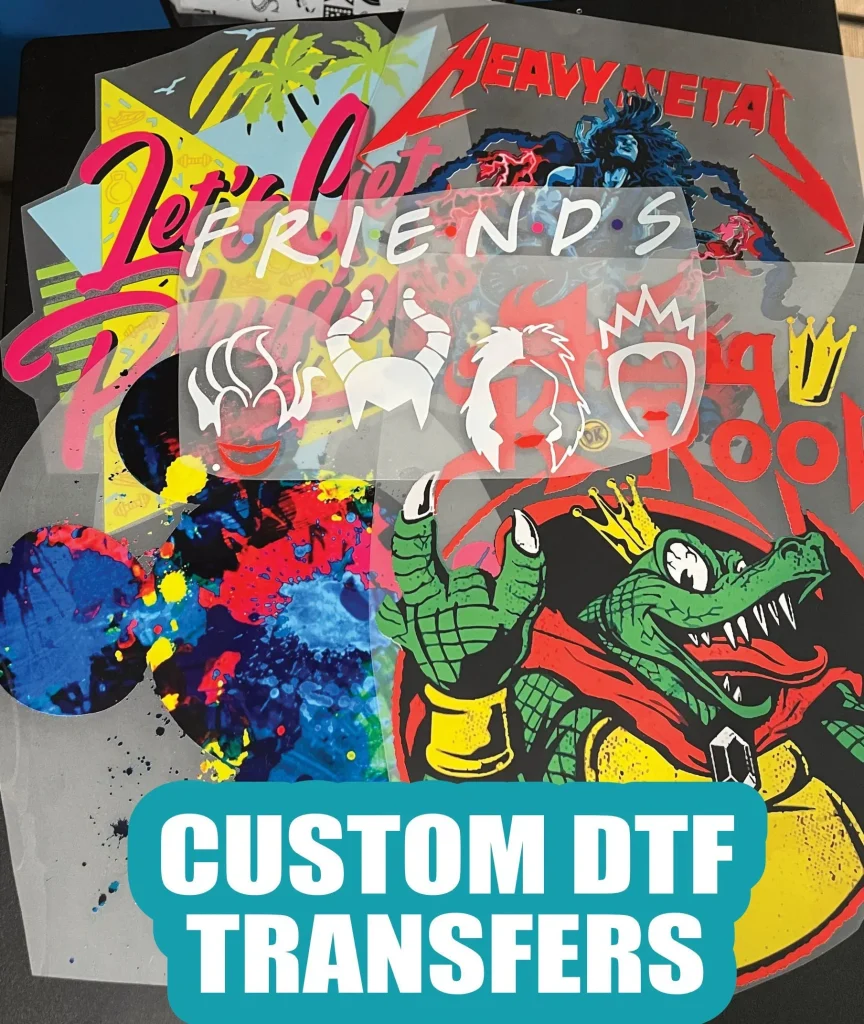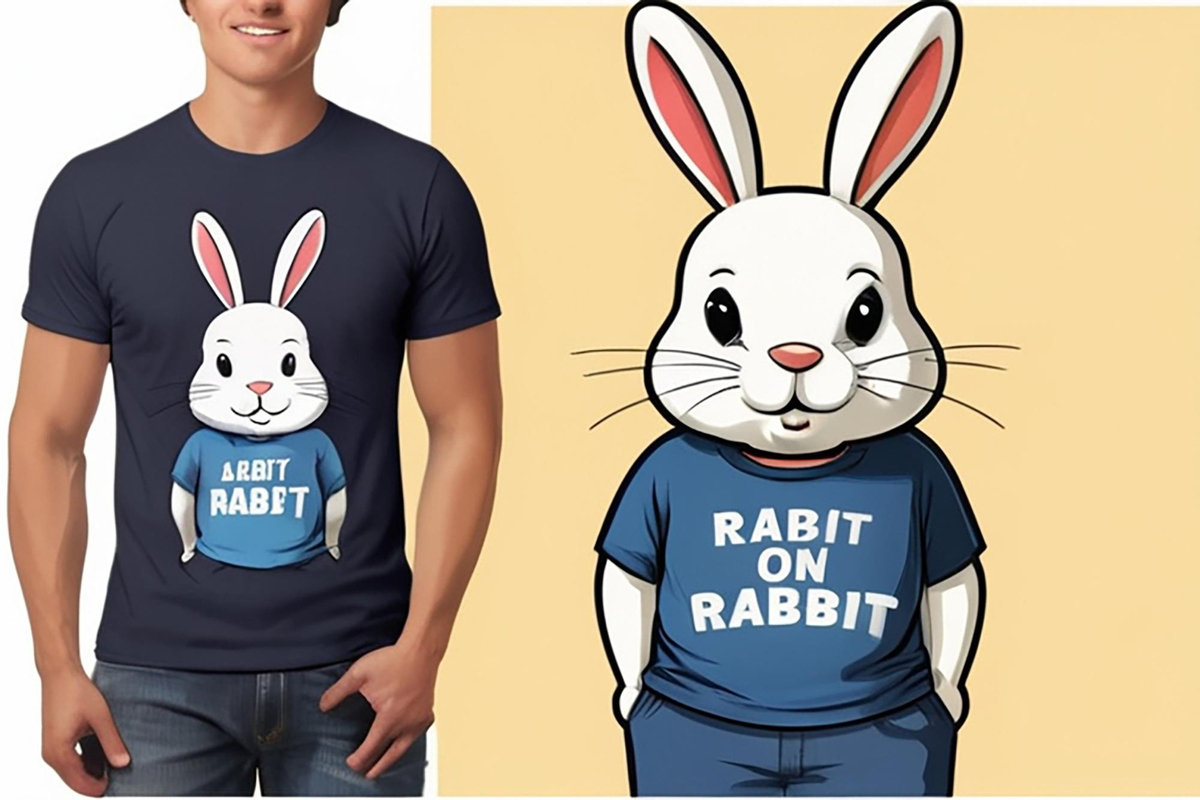DTF transfers, or Direct-to-Film transfers, are revolutionizing the world of custom printing, offering unparalleled quality and versatility for apparel customization. This innovative printing technology allows intricate designs to be transferred onto fabrics with remarkable color vibrancy and durability, making it a go-to choice for fashion enthusiasts and businesses alike. As the demand for unique, personalized merchandise skyrockets, DTF transfer applications are attracting attention for their efficiency and adaptability across various materials. With the ability to produce high-quality prints quickly, DTF technology stands at the forefront of the custom printing landscape, ensuring that creators can meet consumer appetites for originality. Understanding DTF transfers is not just beneficial—it’s essential for anyone involved in the custom printing industry today.
Exploring the realm of Direct-to-Film printing reveals a game-changing method in the custom printing arena, known for its high-quality outputs and diverse applications. This technique utilizes a specialized film to imprint designs, which are then effectively heat-pressed onto textiles, delivering exceptional detail and longevity. As the trend for personalized apparel surges, the role of DTF transfers in fulfilling this demand cannot be overstated, allowing businesses to capitalize on the growing appetite for tailored goods. Furthermore, innovations in DTF printing technology are setting new standards in production efficiency, enhancing the overall customization experience. Understanding this advanced methodology is crucial for industry stakeholders looking to stay ahead in the rapidly evolving world of custom garment printing.
Exploring the Versatility of DTF Transfers
DTF transfers are gaining traction due to their versatility, making them suitable for a wide range of fabrics, including cotton, polyester, and blends. This adaptability allows businesses in the custom printing arena to cater to various markets, from fashion apparel to home textiles. With the ability to produce vibrant prints capable of withstanding multiple washes without fading, DTF transfers provide a long-lasting solution for apparel customization. By harnessing DTF printing technology, companies can offer their clients an array of options, ensuring that every custom design meets the specific needs and preferences of the customer.
Another significant advantage of DTF transfers is their ease of application. Unlike traditional methods that often require complex setups, DTF transfers can be applied using a simple heat press, which minimizes labor time and costs. This user-friendly approach not only benefits professionals but also empowers hobbyists and DIY enthusiasts to engage in apparel customization. The simplified process enables faster turnaround times for custom orders, making DTF technology an attractive option for businesses aiming to scale their production without compromising quality.
The Impact of DTF Printing Technology on Custom Merchandising
DTF printing technology has transformed the landscape of custom merchandising by allowing creators to produce high-quality prints quickly and efficiently. As consumer demand for personalized products surges, businesses equipped with DTF transfer capabilities are better positioned to fulfill these needs. This technology not only enhances creativity with its ability to replicate intricate designs but also appeals to the eco-conscious market through its waste-reducing production processes.
Moreover, DTF transfers contribute significantly to reducing lead times in the merchandising sector. With advancements in DTF printer technology, companies can now produce custom designs at a faster rate than ever before. As a result, businesses can respond swiftly to market trends, launching new products that meet consumer demands while leveraging the unique benefits of DTF printing. Such agility in production is crucial for brands aiming to maintain their competitive edge in the fast-paced world of custom merchandising.
The Role of Education in Advancing DTF Transfer Knowledge
As DTF technology becomes mainstream, education plays a pivotal role in ensuring industry professionals are well-versed in its applications and techniques. Companies like GJS are leading educational initiatives, hosting webinars and workshops that delve into the intricacies of DTF printing. These sessions aim to empower businesses and individuals alike, providing vital information on everything from setup and maintenance to advanced design techniques.
By facilitating access to knowledge about DTF transfers, these educational programs help demystify the technology and improve print quality across the industry. Participants benefit from sharing best practices and troubleshooting tips, fostering a community of informed professionals eager to capitalize on the advantages that DTF technology offers. In an industry that thrives on innovation, continuous learning is essential to ensuring that users can fully leverage the potential of DTF transfers.
DTF Transfers in the Apparel Customization Domain
The apparel industry has seen substantial benefits from the integration of DTF transfers. Businesses like Snuggle are at the forefront, providing specialized services designed to meet the growing demands of this market. With the ability to produce large quantities of high-quality prints, companies are now capable of fulfilling custom apparel orders at unprecedented speeds, catering to both mass-market retailers and niche brands seeking unique designs.
Furthermore, DTF transfers’ adaptability to diverse materials enables brands to cater to various demographics and styles. From high-end fashion lines to affordable casual wear, the applications of DTF technology span a vast spectrum, allowing for a rich variety of custom designs. As consumer preferences shift towards personalized products, understanding DTF transfers can empower businesses to create offerings that resonate with their target audiences, enhancing brand loyalty and customer satisfaction.
Addressing Concerns About DTF Transfer Removability
While the many benefits of DTF transfers are clear, businesses must also address common concerns regarding their longevity and removability. Potential customers often wonder if DTF prints can be easily removed without damaging the underlying fabric. Understanding the nuances of DTF application techniques and aftercare can help build trust with clients who seek durability without permanence.
Conducting thorough tests and providing clear guidelines for customers can alleviate worries about DTF transfers’ removability. By sharing insights on how to maintain the integrity of both the print and the fabric, businesses can ensure that clients feel confident in their purchasing decisions. As the industry continues to evolve, it will be essential for companies to establish DTF solutions as reliable options for custom prints, positioning them as worthwhile investments in the personalization market.
The Future of DTF Transfers in Custom Printing Innovation
Looking ahead, the future of DTF transfers appears promising as the technology continues to innovate and evolve. Ongoing advancements in DTF printing equipment and materials are paving the way for even higher-quality prints that meet the growing expectations of consumers. As businesses increasingly recognize the advantages of DTF technology, they are more likely to invest in research and development, contributing to the refinement of DTF processes and applications.
Moreover, as the demand for custom printing rises, the integration of DTF transfers in a diverse range of industries—from fashion to promotional products—will likely become more pronounced. The ability to create cost-effective and high-quality prints makes DTF not only a viable option but a necessary component for businesses aiming to stay relevant in the competitive market of custom printing. As technology advances, DTF transfers will undoubtedly remain a focal point in reshaping the future of personalized products, ensuring that they meet the evolving needs of consumers.
Frequently Asked Questions
What are DTF Transfers in custom printing?
DTF transfers, or Direct-to-Film transfers, are a modern printing method that allows designs to be printed onto a special film and then applied to fabric using heat and pressure. This innovative technique is known for its vibrant colors, intricate details, and durability, making it a popular choice in custom printing for apparel and merchandise.
How does DTF printing technology improve apparel customization?
DTF printing technology enhances apparel customization by providing high-quality, detailed prints on a variety of fabrics. This technology allows for intricate designs to be created easily, catering to the growing demand for personalized clothing and enabling businesses to offer unique products in the custom printing market.
What advantages do DTF transfers offer compared to traditional printing methods?
DTF transfers provide several advantages over traditional methods like screen printing or DTG printing, including the ability to print on multiple fabric types, consistent vibrant colors, and excellent durability. Additionally, DTF technology supports faster production times, making it ideal for businesses needing quick turnaround on custom printing orders.
Are there any limitations to DTF transfer applications?
While DTF transfers are highly versatile, some limitations include the need for specific heat settings and the potential for issues if not applied correctly. However, with proper training and understanding of the DTF printing process, many businesses can effectively overcome these challenges in their custom printing applications.
Can DTF prints be removed without damaging the fabric?
The removability of DTF prints can vary depending on the fabric and application process. Some DTF transfers can be removed without damage if done carefully; however, it is essential to test this with the specific material used. Understanding the properties of DTF transfers is crucial for businesses and consumers looking for long-term solutions in their custom printing endeavors.
How is the demand for DTF Transfers impacting the custom printing industry?
The demand for DTF transfers is significantly impacting the custom printing industry by promoting faster production processes, higher quality outputs, and an expansion of design capabilities. As more companies invest in DTF technology, businesses can better meet consumer needs for personalized apparel, shaping the future of custom printing.
| Key Point | Description |
|---|---|
| Definition of DTF Transfers | A printing method that involves transferring designs onto a special film for application on fabric using heat and pressure. |
| Advantages of DTF | Offers vibrant colors, intricate details, and high durability, making it versatile for various fabrics. |
| Market Trends | Increasing demand for customized apparel has made DTF transfers essential for businesses aiming to scale. |
| Industry Leaders | Companies such as DesignBundles.net and Eazydtf are leading innovations in DTF technology and services. |
| Educational Initiatives | Webinars and programs are being launched to enhance understanding and implementation of DTF technology in the industry. |
| Apparel Customization Impact | DTF transfers are gaining traction in the apparel industry, especially among small businesses and enterprises seeking unique designs. |
| Concerns and Practicalities | Considerations about the removability of DTF prints are crucial for customers, impacting its long-term reliability. |
Summary
DTF Transfers represent a significant evolution in the landscape of custom printing, combining innovative technology with creative possibilities. As businesses continue to adapt to consumer demands for personalized products, understanding the implications and techniques of DTF transfers will be essential. With the introduction of advanced printing technology and educational initiatives, stakeholders in the custom printing market are poised to harness the full potential of DTF transfers, ensuring they meet the growing appetites of consumers for unique and high-quality apparel.



